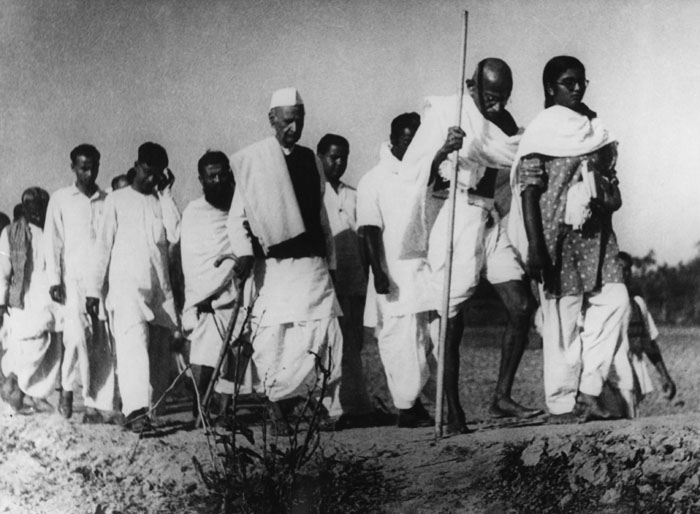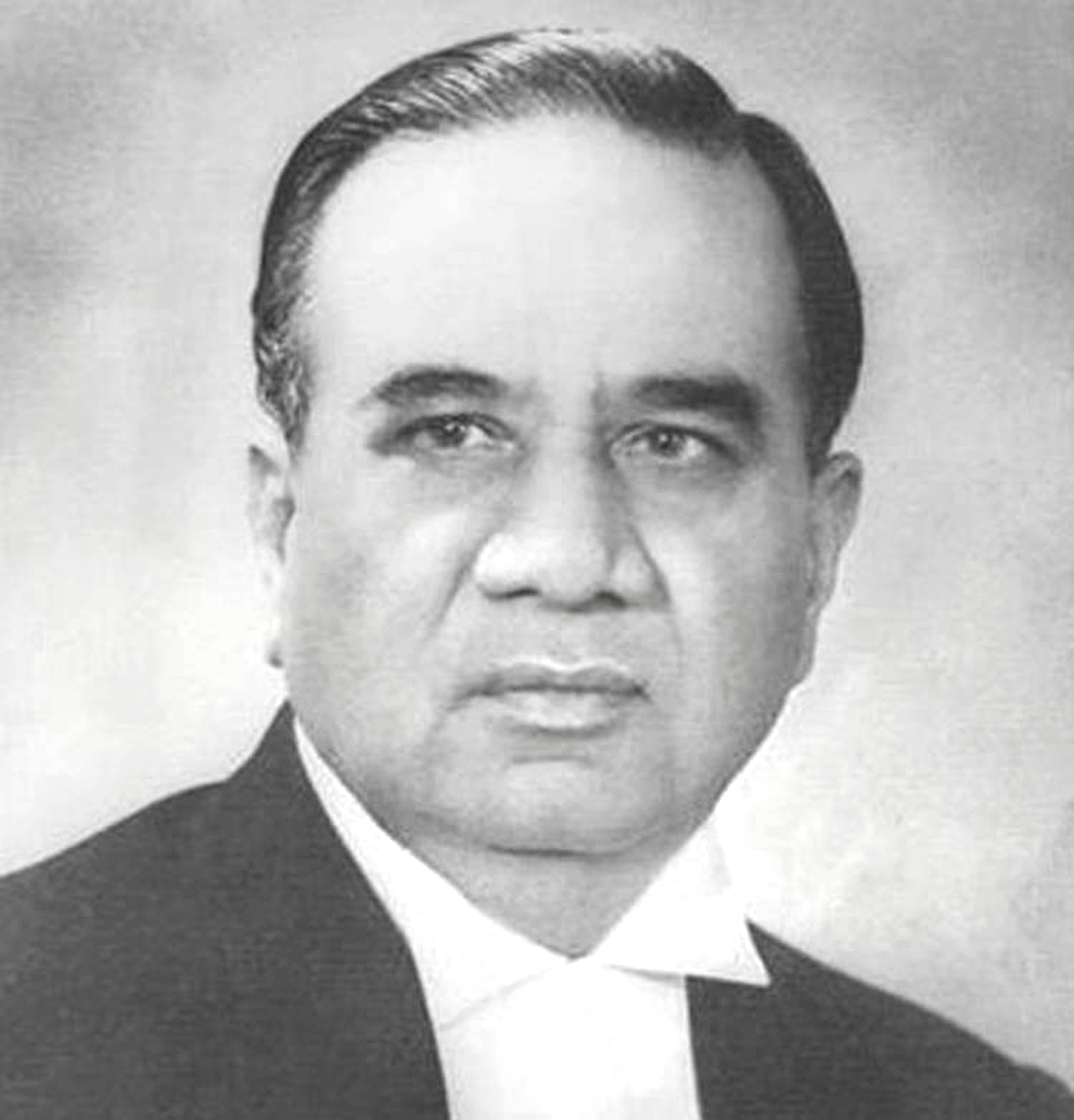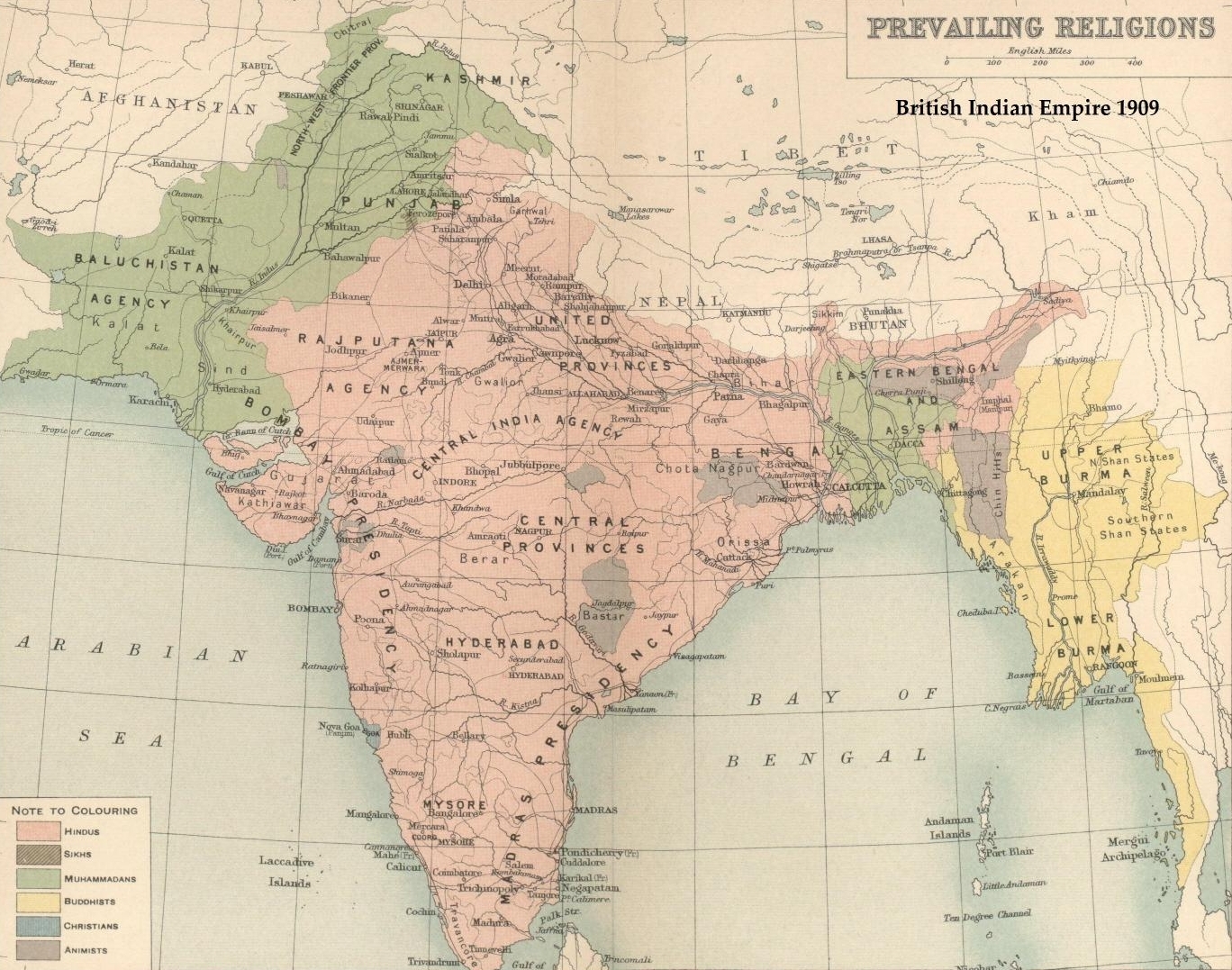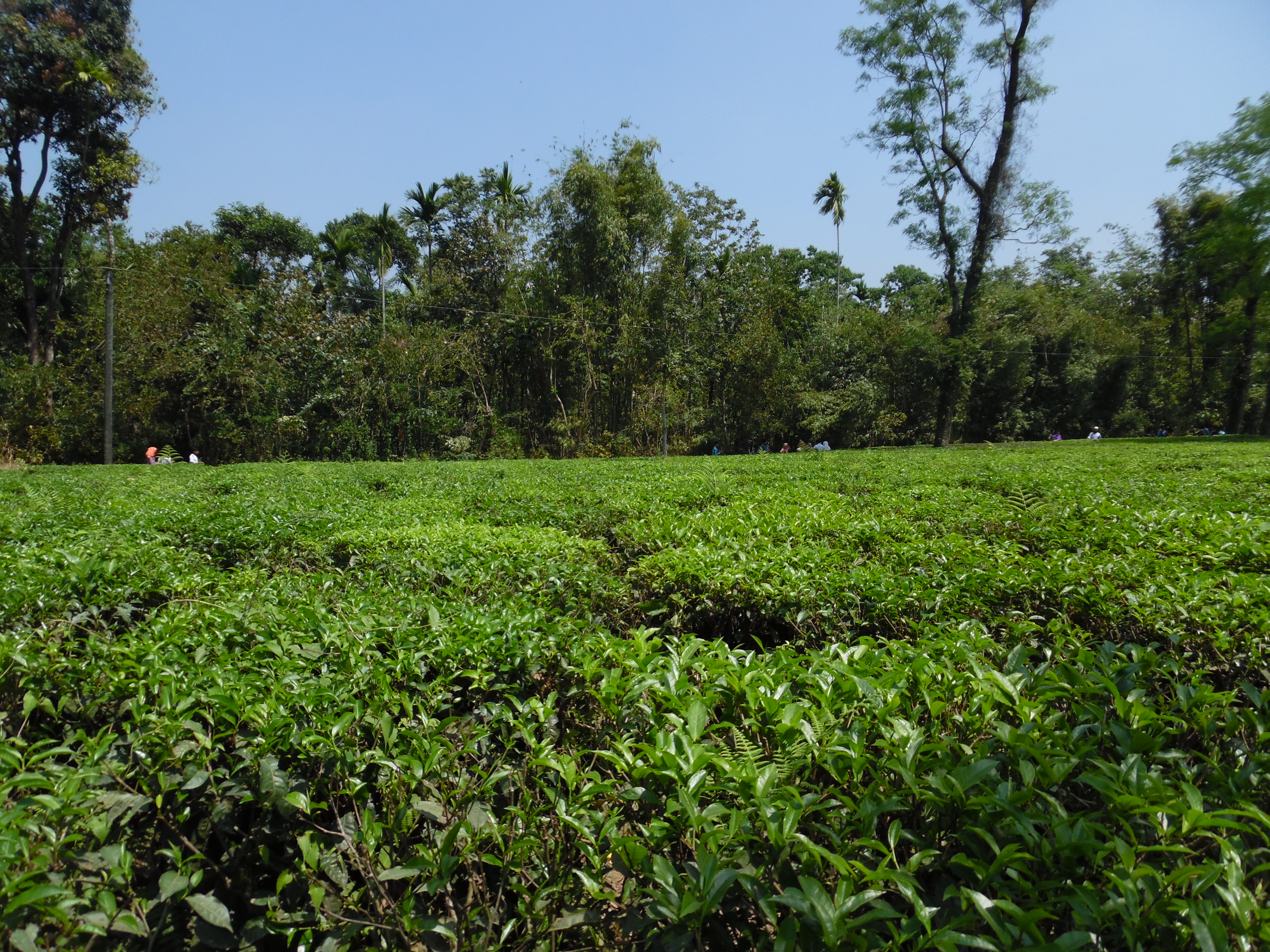|
1947 Partition Of Bengal
The Partition of Bengal in 1947, also known as the Second Partition of Bengal, part of the Partition of India, divided the British Indian Bengal Province along the Radcliffe Line between the Dominion of India and the Dominion of Pakistan. The Bengali Hindu-majority West Bengal became a state of India, and the Bengali Muslim-majority East Bengal (now Bangladesh) became a province of Pakistan. On 20 June 1947, the Bengal Legislative Assembly met to decide the future of the Bengal Province, as between being a United Bengal within India or Pakistan or divided into East Bengal and West Bengal as the homelands for the Bengali Muslims and the Bengali Hindus, respectively. At the preliminary joint session, the assembly decided by 126–90 that if it remained united, it should join the new Constituent Assembly of Pakistan. Later, a separate meeting of legislators from West Bengal decided by 58–21 that the province should be partitioned and that West Bengal should join the existing ... [...More Info...] [...Related Items...] OR: [Wikipedia] [Google] [Baidu] |
Partition Of India
The partition of India in 1947 was the division of British India into two independent dominion states, the Dominion of India, Union of India and Dominion of Pakistan. The Union of India is today the Republic of India, and the Dominion of Pakistan is the Islamic Republic of Pakistan and the People's Republic of Bangladesh. The Partition (politics), partition involved the division of two provinces, Bengal and the Punjab Province (British India), Punjab, based on district-wise Hindu or Muslim majorities. It also involved the division of the British Indian Army, the Royal Indian Navy, the Indian Civil Service, the History of rail transport in India, railways, and the central treasury, between the two new dominions. The partition was set forth in the Indian Independence Act 1947 and resulted in the dissolution of the British Raj, or Crown rule in India. The two self-governing countries of India and Pakistan legally came into existence at midnight on 14–15 August 1947. The partiti ... [...More Info...] [...Related Items...] OR: [Wikipedia] [Google] [Baidu] |
United Bengal
United Bengal was a proposal to transform Bengal Presidency, Bengal Province into an undivided, sovereign state at the time of the Partition of India in 1947. It sought to prevent the Partition of Bengal (1947), division of Bengal on religious grounds. The proposal originated in the pre-partition political leadership of the province, and found some cross-communal support. The proposed state was to be called the Free State of Bengal. A Confessionalism (politics), confessionalist political system was mooted. The proposal was not put up for a vote. The British government proceeded to partition Bengal in accordance with the Mountbatten Plan and Radcliffe Line. Background In the first few centuries of the second millennium, the level of independence of Bengal was fought over by the governors of Bengal and by the Delhi Sultanate, rulers of Delhi. Bengal finally emerged as an independent polity with the establishment of the Sultanate of Bengal, formed from the unification of three pr ... [...More Info...] [...Related Items...] OR: [Wikipedia] [Google] [Baidu] |
Krishak Praja Party
The Krishak Sramik Party (, ''Farmer Labourer Party'') was a major anti-feudal political party in the British Indian province of Bengal and later in the Dominion of Pakistan's East Bengal and East Pakistan provinces. It was founded in 1929 as the Nikhil Banga Praja Samiti to represent the interests of tenant farmers in Bengal's landed gentry estates. Sir Abdur Rahim was its first leader. Bengal Legislative Assembly. After the partition of British India, it was reorganized as the Krishak Sramik Party (Farmer-Labour Party) to contest the 1954 East Bengali legislative election, 1954 election, as part of the United Front (East Pakistan), United Front. The coalition won the election and formed the provincial government in the East Bengal Legislative Assembly. The party's politics played an important role in the growth of Bengali Muslim political consciousness; it also received support from large sections of the Bengali Hindu population who resented the influence of the landed gentry ... [...More Info...] [...Related Items...] OR: [Wikipedia] [Google] [Baidu] |
Cyril Radcliffe
Cyril John Radcliffe, 1st Viscount Radcliffe, (30 March 1899 – 1 April 1977) was a British lawyer and Law Lord best known for his role in the Partition of India. He served as the first chancellor of the University of Warwick from its 1965 foundation until 1977. Education and early career Radcliffe was born in Llanychan, Denbighshire, Wales, third of the four children — all sons — of Captain Alfred Ernest Radcliffe, of the King's Own Royal Regiment, and Sybil Harriet, daughter of solicitor Robert Cunliffe, President of the Law Society of England and Wales between 1890 and 1891. Radcliffe was educated at Haileybury College. He was conscripted in World War I, allocated to the Labour Corps because of his poor eyesight. After the war, he attended New College, Oxford, and took a first in '' literae humaniores'' in 1921. In 1922, he was elected to a prize fellowship at All Souls College, Oxford. He won the Eldon Law Scholarship in 1923. He was called to the bar by the Inn ... [...More Info...] [...Related Items...] OR: [Wikipedia] [Google] [Baidu] |
Partition Of Bengal (1905)
The Partition of Bengal in 1905, also known as the First Partition of Bengal, was a territorial reorganization of the Bengal Presidency implemented by the authorities of the British Raj. The reorganization separated the largely Muslim eastern areas from the largely Hindu western areas. Announced on 16 October 1905 by George Nathaniel Curzon, 1st Marquess Curzon of Kedleston, Lord Curzon, then Governor-General of India, Viceroy of India, and implemented West Bengal for Hindus and East Bengal for Muslims, it was undone a mere six years later. The Partition (politics), Partition was aimed for administration purposes but in fact is treated as divide and rule policy and further agitated people, who perceived that it was a deliberate attempt to divide the Bengal Presidency on religious grounds, with a Muslim majority in the east and a Hindu majority in the west, thereby weakening the nationalist cause. The Hindus of West Bengal, who dominated Bengal's business and rural life, compla ... [...More Info...] [...Related Items...] OR: [Wikipedia] [Google] [Baidu] |
West Bengal Legislative Assembly Entrance - Kolkata 2011-12-18 0339
West is one of the four cardinal directions or points of the compass. It is the opposite direction from east and is the direction in which the Sun sets on the Earth. Etymology The word "west" is a Germanic word passed into some Romance languages (''ouest'' in French, ''oest'' in Catalan, ''ovest'' in Italian, ''vest'' in Romanian, ''oeste'' in Spanish and Portuguese). As in other languages, the word formation stems from the fact that west is the direction of the setting sun in the evening: 'west' derives from the Indo-European root ''*wes'' reduced from ''*wes-pero'' 'evening, night', cognate with Ancient Greek ἕσπερος hesperos 'evening; evening star; western' and Latin vesper 'evening; west'. Examples of the same formation in other languages include Latin occidens 'west' from occidō 'to go down, to set' and Hebrew מַעֲרָב (maarav) 'west' from עֶרֶב (erev) 'evening'. West is sometimes abbreviated as W. Navigation To go west using a compass for navigati ... [...More Info...] [...Related Items...] OR: [Wikipedia] [Google] [Baidu] |
Lord Mountbatten Meets Nehru, Jinnah And Other Leaders To Plan Partition Of India
Lord is an appellation for a person or deity who has authority, control, or power over others, acting as a master, chief, or ruler. The appellation can also denote certain persons who hold a title of the peerage in the United Kingdom, or are entitled to courtesy titles. The collective "Lords" can refer to a group or body of peers. Etymology According to the ''Oxford Dictionary of English'', the etymology of the word can be traced back to the Old English word ''hlāford'' which originated from ''hlāfweard'' meaning "loaf-ward" or "bread-keeper", reflecting the Germanic tribal custom of a chieftain providing food for his followers. The appellation "lord" is primarily applied to men, while for women the appellation "lady" is used. This is no longer universal: the Lord of Mann, a title previously held by the Queen of the United Kingdom, and female Lords Mayor are examples of women who are styled as "Lord". Historical usage Feudalism Under the feudal system, "lord" had a wi ... [...More Info...] [...Related Items...] OR: [Wikipedia] [Google] [Baidu] |
Bangladesh Liberation War
The Bangladesh Liberation War (, ), also known as the Bangladesh War of Independence, was an War, armed conflict sparked by the rise of the Bengali nationalism, Bengali nationalist and self-determination movement in East Pakistan, which resulted in the independence of Bangladesh. The war began when the Pakistani Military dictatorship, military junta based in West Pakistan—under the orders of Yahya Khan—launched Operation Searchlight against East Pakistanis on the night of 25 March 1971, initiating the Bangladesh genocide. In response to the violence, members of the Mukti Bahini—a Guerrilla warfare, guerrilla resistance movement formed by Bengali military, paramilitary and civilians—launched a mass guerrilla war against the Pakistan Armed Forces, Pakistani military, liberating numerous towns and cities in the war's initial months. At first, the Pakistan Army regained momentum during the monsoon, but Bengali guerrillas counterattacked by carrying out widespread sabotag ... [...More Info...] [...Related Items...] OR: [Wikipedia] [Google] [Baidu] |
Indian Subcontinent
The Indian subcontinent is a physiographic region of Asia below the Himalayas which projects into the Indian Ocean between the Bay of Bengal to the east and the Arabian Sea to the west. It is now divided between Bangladesh, India, and Pakistan. (subscription required) Although the terms "Indian subcontinent" and "South Asia" are often also used interchangeably to denote a wider region which includes, in addition, Bhutan, the Maldives, Nepal and Sri Lanka, the "Indian subcontinent" is more of a geophysical term, whereas "South Asia" is more geopolitical. "South Asia" frequently also includes Afghanistan, which is not considered part of the subcontinent even in extended usage.Jim Norwine & Alfonso González, ''The Third World: states of mind and being'', pages 209, Taylor & Francis, 1988, Quote: ""The term "South Asia" also signifies the Indian Subcontinent""Raj S. Bhopal, ''Ethnicity, race, and health in multicultural societies'', pages 33, Oxford University Press, 2007, ; Q ... [...More Info...] [...Related Items...] OR: [Wikipedia] [Google] [Baidu] |
Mountbatten Plan
The partition of India in 1947 was the division of British India into two independent dominion states, the Union of India and Dominion of Pakistan. The Union of India is today the Republic of India, and the Dominion of Pakistan is the Islamic Republic of Pakistan and the People's Republic of Bangladesh. The partition involved the division of two provinces, Bengal and the Punjab, based on district-wise Hindu or Muslim majorities. It also involved the division of the British Indian Army, the Royal Indian Navy, the Indian Civil Service, the railways, and the central treasury, between the two new dominions. The partition was set forth in the Indian Independence Act 1947 and resulted in the dissolution of the British Raj, or Crown rule in India. The two self-governing countries of India and Pakistan legally came into existence at midnight on 14–15 August 1947. The partition displaced between 12 and 20 million people along religious lines, creating overwhelming refugee crises ... [...More Info...] [...Related Items...] OR: [Wikipedia] [Google] [Baidu] |
Assam Province
Assam Province was a province of British India, created in 1912 by the partition of the Eastern Bengal and Assam Province. Its capital was in Shillong. The Assam territory was first separated from Bengal in 1874 as the 'North-East Frontier' non-regulation province. It was incorporated into the new province of Eastern Bengal and Assam in 1905 and re-established as a province in 1912. History In 1824, Assam was occupied by British forces following the First Anglo-Burmese War and on 24 February 1826 it was ceded to Britain by Burma under the Yandaboo Treaty of 1826. Between 1826 and 1832, Assam was made part of Bengal under the Bengal Presidency. From 1832 to October 1838, the Assam princely state was restored in Upper Assam while the British ruled in Lower Assam. Purandar Singha was allowed to rule as king of Upper Assam in 1833, but after that brief period Assam was annexed to Bengal by the British. In 1873, British political control was imposed on western Naga communiti ... [...More Info...] [...Related Items...] OR: [Wikipedia] [Google] [Baidu] |
Sylhet
Sylhet (; ) is a Metropolis, metropolitan city in the north eastern region of Bangladesh. It serves as the administrative center for both the Sylhet District and the Sylhet Division. The city is situated on the banks of the Surma River and, as of 2025, the metro area population of Sylhet is estimated to be 1,033,000, reflecting a 3.4% increase from 2024. Making it third-largest urban area. Sylhet is known for its tea plantations and natural scenery. The region has been inhabited since ancient times, and since the city's establishment in the 14th century has been ruled by various dynasties including the Mughals, the British Empire, British, and the Nawabs of Bengal. The city is also home to several important landmarks, such as one of the Islamic sites in Bangladesh, the Shah Jalal Dargah, which attracts thousands of pilgrims annually. Sylhet is also the first city in the country to have a road with no overhead cable. Sylhet is one of the most economically important cities in Bang ... [...More Info...] [...Related Items...] OR: [Wikipedia] [Google] [Baidu] |









